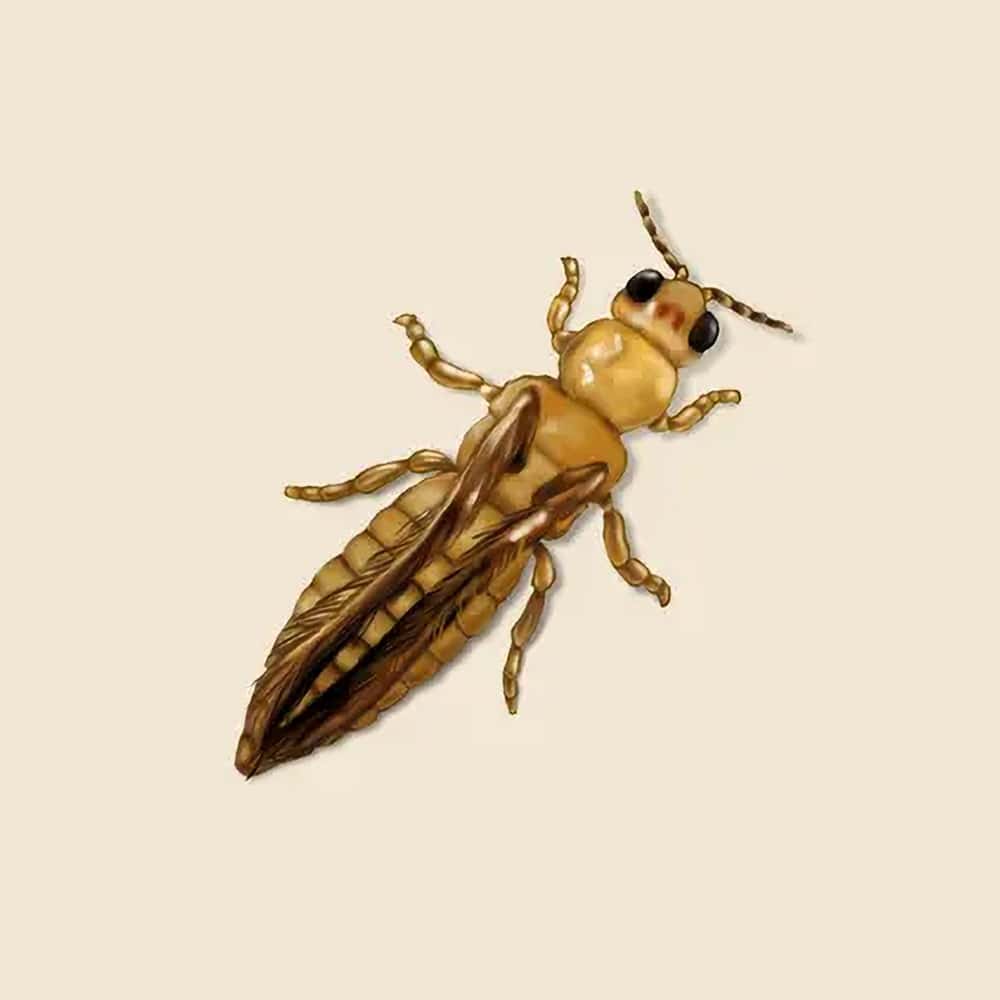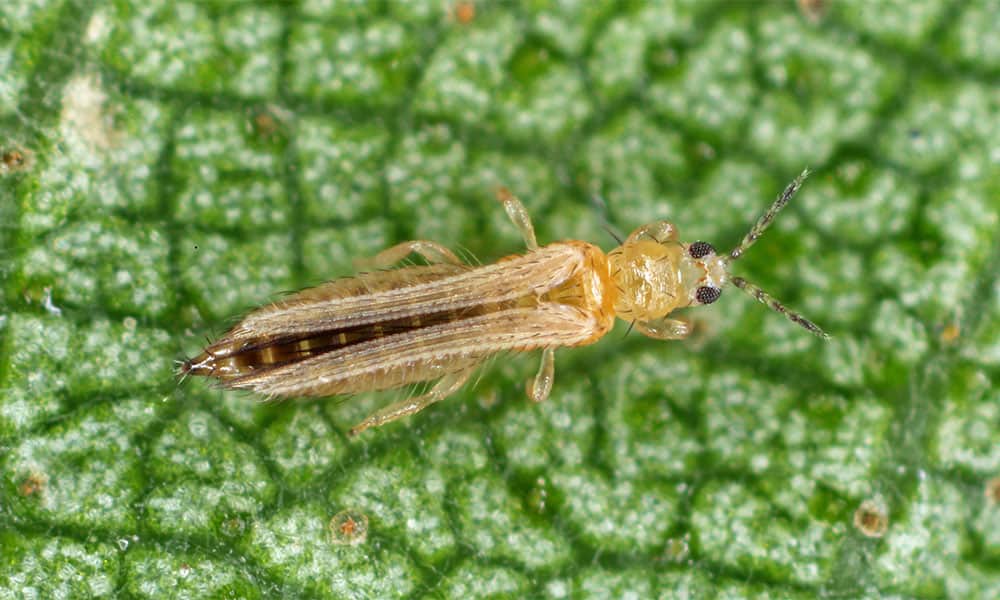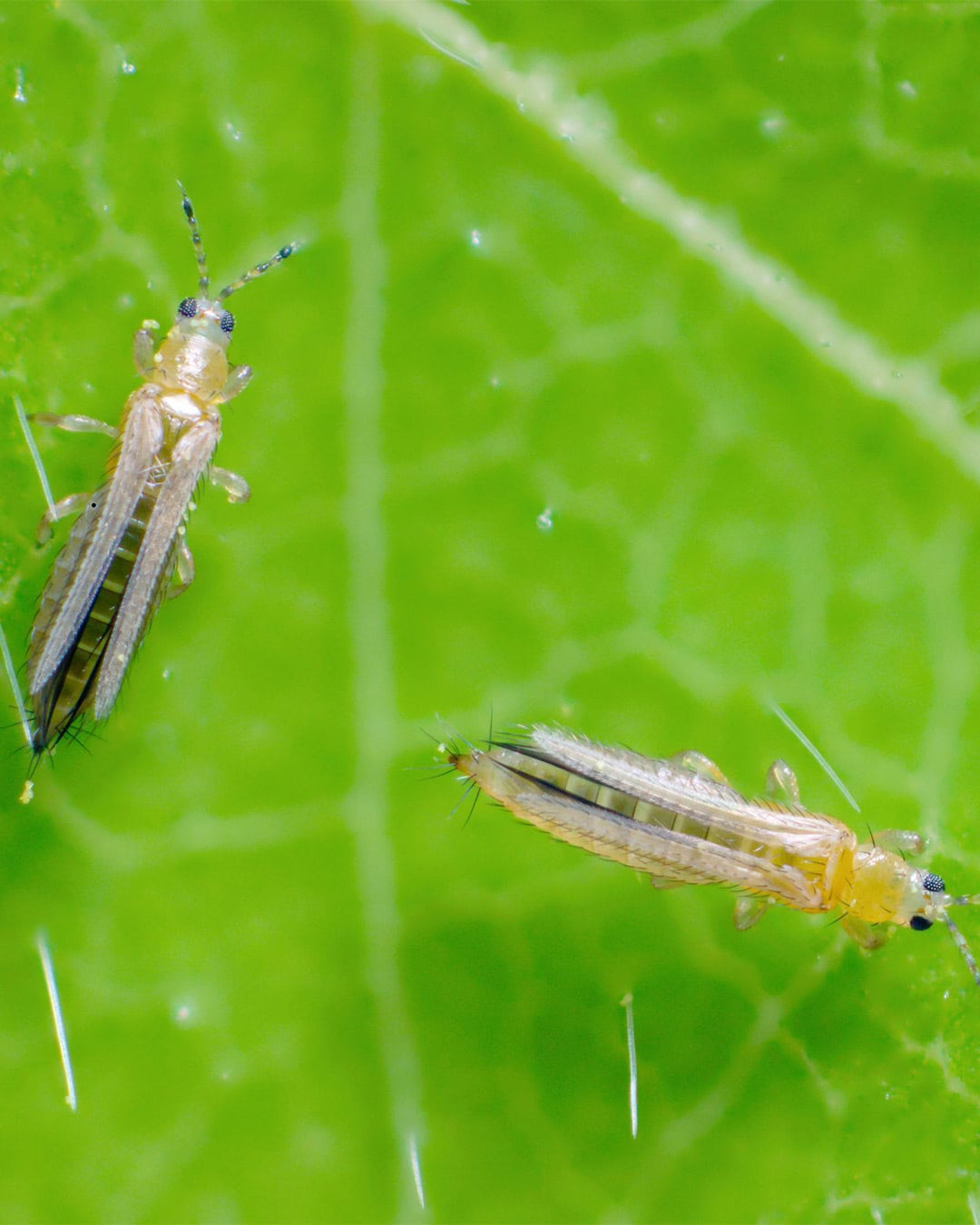Thrip Facts & Information
Thrips, known for their tiny size and voracious appetite for plant tissues, are a significant nuisance for gardeners and farmers alike. These pests can cause extensive damage to flowers, fruits, and vegetables, leading to poor crop yields and unsightly plants.

Thysanoptera
What You Need To Know About Thrips
What do mealybugs look like?
Mealybugs are small, soft-bodied insects covered with a white, powdery, or mealy wax coating. They are typically about 1/8 to 1/4 inch long and may have a slightly elongated, segmented body.
What do mealybugs eat?
Mealybugs feed on plant sap, using their piercing mouthparts to suck fluids from leaves, stems, and roots which can weaken plants and lead to the development of sooty mold due to their honeydew excretions.
What sort of habitat do mealybugs live in?
Mealybugs thrive in warm, moist environments and are commonly found on houseplants, greenhouse plants, and outdoor ornamental plants. They often hide in crevices, leaf axils, and under leaves.
How do mealybugs commonly behave?
Mealybugs are relatively immobile and tend to cluster in groups on plant parts. They can be difficult to detect initially due to their small size and habit of hiding in protected areas. Their presence is often first noticed by the damage they cause to plants.
Did you know this about mealybugs?
Mealybugs can reproduce rapidly, especially in controlled environments like greenhouses. Some species of mealybugs are capable of producing hundreds of offspring in their lifetime. Additionally, mealybugs are known to have a mutualistic relationship with ants, which protect them from predators in exchange for the sweet honeydew they produce.
Understanding Thrip Infestations
Understanding thrip infestations is crucial for effective control. Thrips are small, slender insects that feed by puncturing plant cells and sucking out the contents, leaving behind silvery, stippled damage. They are highly mobile and can be carried by the wind, quickly spreading across gardens and fields. Early detection and intervention are essential to prevent widespread damage.Thrips do not pose direct health risks to humans, but they can transmit plant viruses, which can devastate crops.Infestations can lead to distorted, discolored, and damaged plant tissues, affecting both the aesthetic value and health of plants.Thrips can reproduce rapidly, with multiple generations occurring within a single growing season, making them particularly challenging to control.

How Hearts Handles Thrip Treatment
Hearts Pest Management employs an integrated pest management approach to handle thrip infestations. Our process begins with a thorough inspection to determine the extent of the infestation and identify affected plants. We then develop a customized treatment plan that may include eco-friendly solutions, ensuring the safety of your plants and the environment.
Thrip Inspection
Thrip Treatment
Thrip Prevention
Educational Resources

Think You Might Have a Thrip Infestation?
At Hearts Pest Control, we understand the challenges associated with Thrip infestations and are here to provide professional solutions tailored to your needs. Flourishing in warm and humid climates, they are prevalent in many regions, including San Diego County, Orange County, and Los Angeles County.